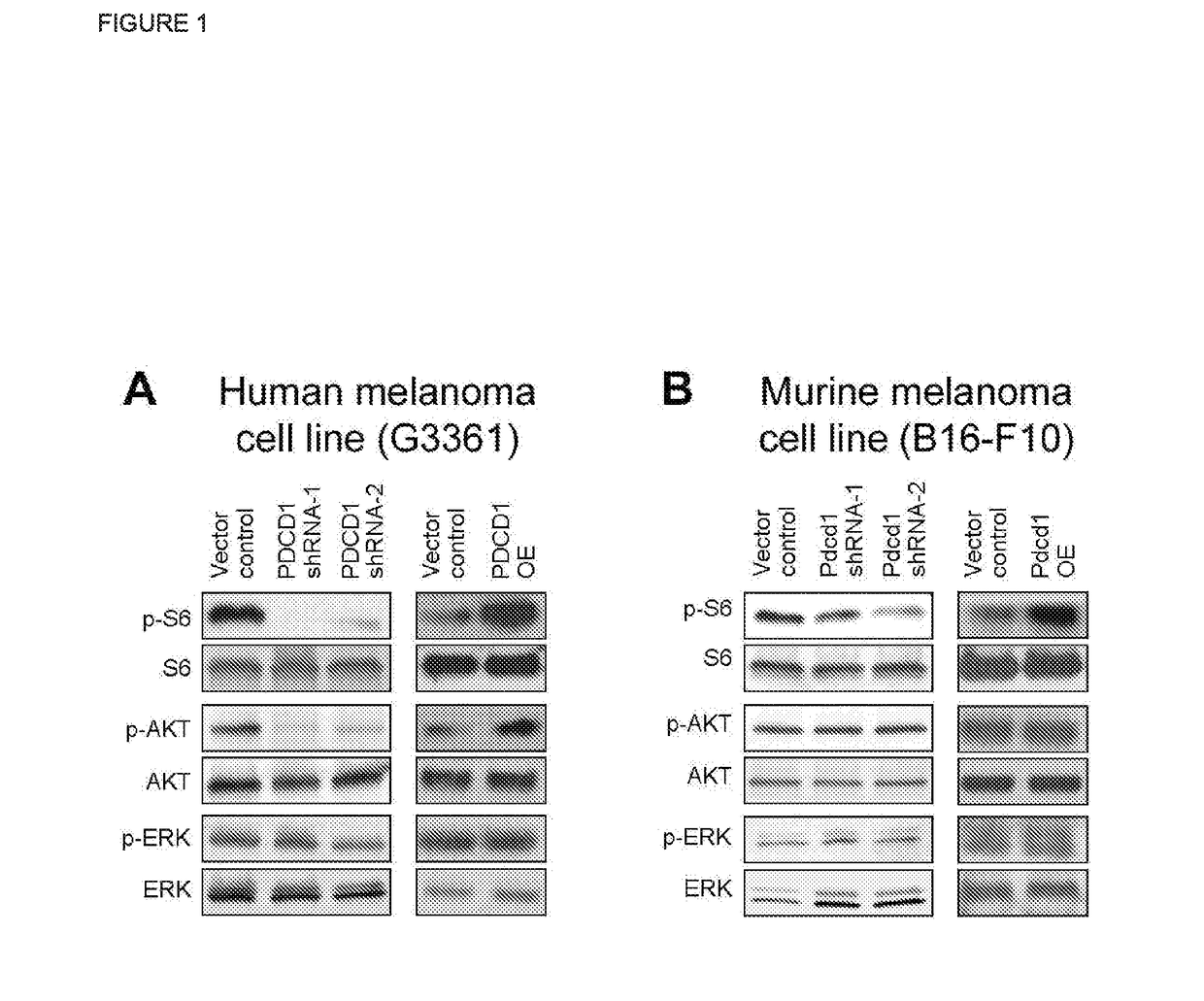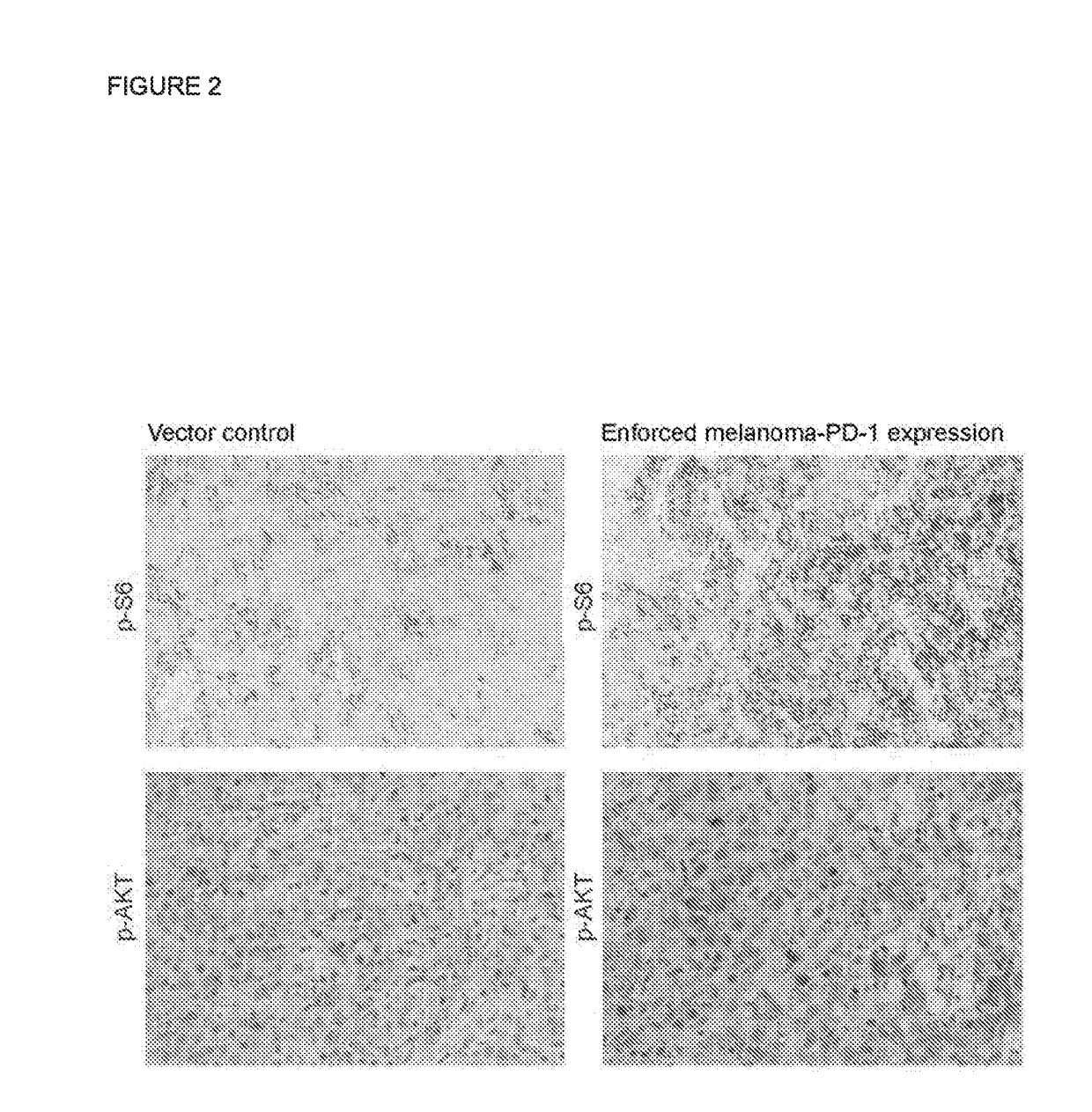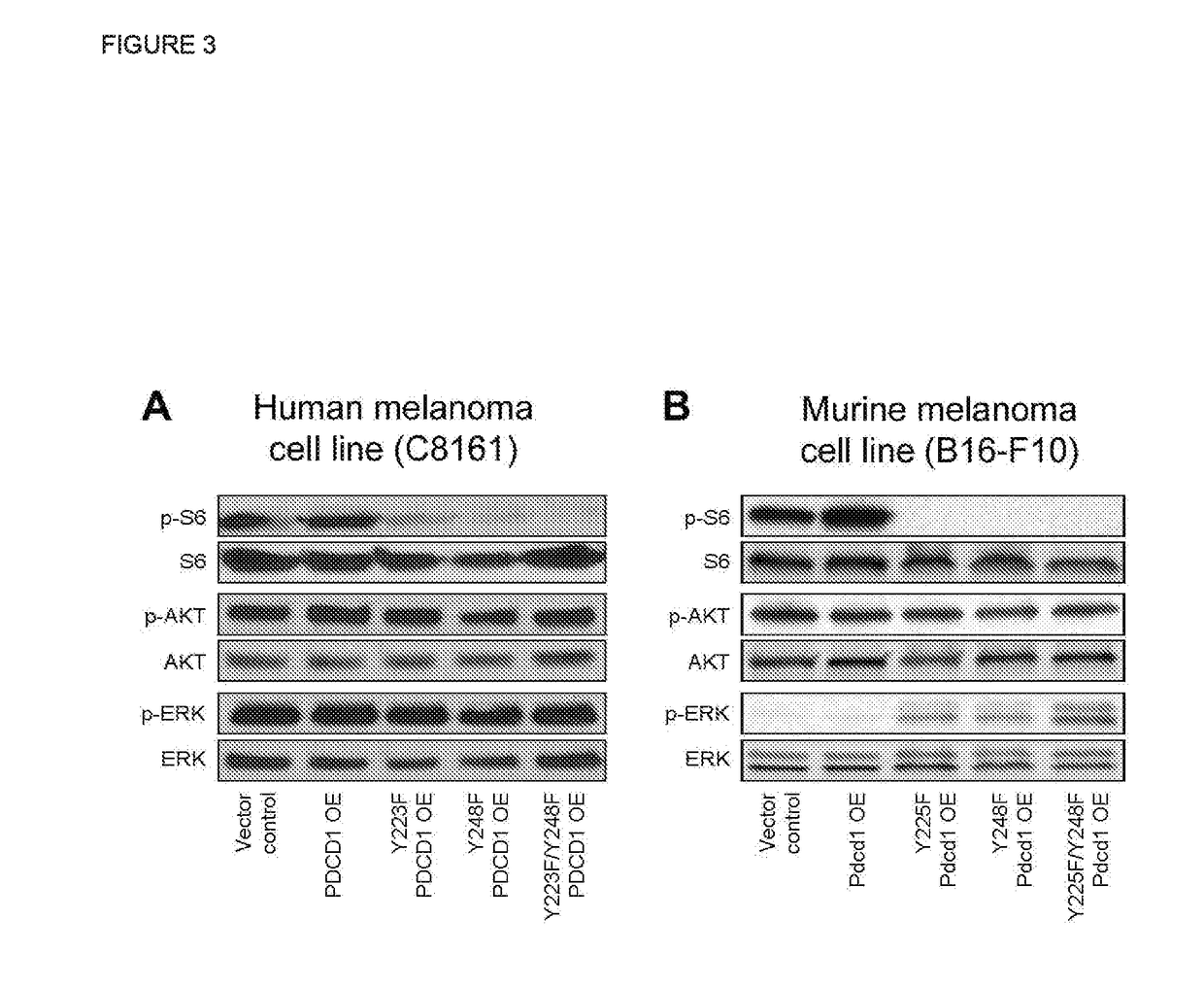Programmed cell death (pd-1) inhibitor therapy for patients with pd-1-expressing cancers
a pd-1-expressing cancer and inhibitor therapy technology, applied in the field of pd-1-expressing cancer patients with pd-1 inhibitor therapy, can solve the problems of large patient population that still does not respond to treatment, and studies that do not find a significant correlation between tumor-pd-1 status
- Summary
- Abstract
- Description
- Claims
- Application Information
AI Technical Summary
Benefits of technology
Problems solved by technology
Method used
Image
Examples
example 1
Activation of the PD-1 Receptor on Melanoma Cells Promotes Phosphorylation of Mediators of the mTOR, PI3K / AKT and MAPK / ERK Signaling Pathways
[0106]Western blot analysis aimed at identifying the signaling pathways downstream of the PD-1 receptor on melanoma cells revealed that shRNA-mediated knockdown of PD-1 (PDCD1) reduces, and overexpression of PD-1 (PDCD1) enhances, phosphorylation of the mTOR and PI3K / AKT signaling mediators, phospho (p)-S6 and p-AKT, respectively, in human G3361 melanoma cells (FIG. 1A). Similarly, in murine B16-F10 melanoma cells, PD-1 (Pdcd1) knockdown decreases, and PD-1 (Pdcd1) overexpression increases, expression of p-S6, as determined by immunoblotting (FIG. 1B). HRP immunoenzymatic staining of human C8161 melanoma xenografts grown in highly immunocompromised NOD / SCID IL2Rγ (- / -) knockout mice confirmed enhanced expression of p-S6 and p-AKT in PD-1-overexpressing (enforced melanoma PD-1 expression) compared to vector control-transduced melanomas (FIG. 2)....
example 2
Antibody-Mediated PD-1 Blockade Inhibits Phosphorylation of mTOR, PI3K / AKT and / or MAPK / ERK Signaling Mediators in Melanoma Cells
[0107]Next, the effects of antibody-mediated PD-1 blockade on signaling pathways downstream of the PD-1 receptor were examined in melanoma cells. Treatment of G3361 melanoma cultures with a PD-1 blocking but not isotype control antibody inhibited PD-L1 Ig-dependent phosphorylation of S6, AKT (serins 478 and 308), and PI3K (FIG. 5A). In murine B16-F10 melanoma cultures, antibody-mediated PD-1 blockade inhibited phosphorylation of S6 (FIG. 5B). Together, these findings identify mTOR and PI3K / AKT, signaling pathway members as biomarkers for (i) monitoring and (ii) predicting response to PD-1 pathway blockade in melanoma. Additionally, these biomarkers can serve as tools to (iii) design rational combination therapies on a patient-by-patient basis, according to the oncogenic pathways affected (or not affected) by PD-1 blockade in a given melanoma sample, includi...
example 3
Activation of the Phosphatase, SHP2 (PTPN11), in Pre-Treatment Tumor Biopsies Correlates with Response to Clinical PD-1 Pathway Inhibitors
[0108]Immunohistochemical staining of pre-treatment tumor biopsies of melanoma patients undergoing anti-PD-1 therapy revealed subgroups of patients with high expression (greater than 25% of melanoma cells) and low expression (less than 25% of melanoma cells) of SHP2 and its activated form, phosphorylated (p-) SHP2 (representative IHC staining is illustrated in FIG. 6). Kaplan Meier analyses revealed no significant difference in overall survival in response to anti-PD-1 therapy between patients with high vs. low total (t-) SHP2 expression (FIG. 7A). However, 100% of patients demonstrating >25% p-SHP2 expression in melanoma biopsies before treatment with therapeutic PD-1 antibodies (Nivolumab or Pemprolizumab) were still alive 35 months after initiation of treatment compared to less than 40% of patients with low p-SHP2 expression (FIG. 7B).
PUM
| Property | Measurement | Unit |
|---|---|---|
| Magnetic field | aaaaa | aaaaa |
| Fraction | aaaaa | aaaaa |
| Digital information | aaaaa | aaaaa |
Abstract
Description
Claims
Application Information
 Login to View More
Login to View More - R&D
- Intellectual Property
- Life Sciences
- Materials
- Tech Scout
- Unparalleled Data Quality
- Higher Quality Content
- 60% Fewer Hallucinations
Browse by: Latest US Patents, China's latest patents, Technical Efficacy Thesaurus, Application Domain, Technology Topic, Popular Technical Reports.
© 2025 PatSnap. All rights reserved.Legal|Privacy policy|Modern Slavery Act Transparency Statement|Sitemap|About US| Contact US: help@patsnap.com



